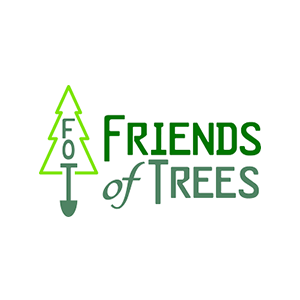Between 2005 and 2025, Tree for All Partners restored more than 150 riparian miles and planted more than 17 million native trees and shrubs. More than 40 case studies were published to document the efforts that made it possible.
Providing a Few Minutes of Nature
Beaverton Creek is the most urbanized waterway in Washington County. Flowing through the heart of Beaverton, the Transit Center project site is surrounded by large stores, apartment buildings and parking lots. About ten years ago, a community-based effort was launched to improve the quality of habitat, increase shade along this open creek and, as much as possible, connect the creek across and through streets and parking lots.
The Site
First planting: 2006
Size: 4 acres
Stream length: 1,881 feet
Total to date: 17,346 plants
Plant communities: Riparian Forest, Water Quality Facility
The Challenge
Bounded tightly by major arterial streets supporting auto, bus, commuter rail and light rail service, this project covers nearly 2,000 feet of streamside riparian and upland habitat. The site’s entire length was overrun with invasive weeds and trees; flash flooding had destabilized its banks; and huge amounts of discarded trash had accumulated. The restoration area is adjacent to a transportation hub that serves thousands of commuters daily. Unfortunately, the creek sometimes acts as a magnet for trash and debris, including the occasional abandoned shopping cart. The project’s numerous environmental goals presented partners with a tall order. Top priorities included improving water quality, restoring native plant communities, adding to floodplain complexity and creating off-channel aquatic habitat for mammals, birds and invertebrates. Just as urgent was the need to inspire community engagement and connection to nature, as well as creating a more pleasant place to enjoy while using transit services.
The Transformation
Despite challenges unique to this urban site, the Beaverton Creek Transit Center project has been wildly successful—even to the most harried commuter, the site’s improvement is evident. Gone are the acres of Himalayan blackberry and trash trees. Today, this urban stream boasts native cottonwoods, wild rose and snowberry shrubs. Thanks to community volunteers recruited by SOLVE and Friends of Trees, along with support from the City of Beaverton and Clean Water Services, more than 17,000 native plants were installed on just under four acres. The ongoing site management plan takes into account the need to avoid creating areas that might attract antisocial or criminal activity. In five short years, the site evolved from an unsightly, weedy mess to a community oasis where today people can enjoy a few minutes of nature, native wildlife such as geese, ducks and the occasional beaver.
16 native plant species
Plant cover change*
Native shrub/tree: +55%
Native herbaceous: insufficient data
Invasive: +33%
* Figures measure increase/decrease since monitoring began in 2008. Shrub/tree and herbaceous cover are measured only in plant communities appropriate to those species.
Click to explore the change in mature native plant coverage between 2007 (purple) and 2014 (orange).









































